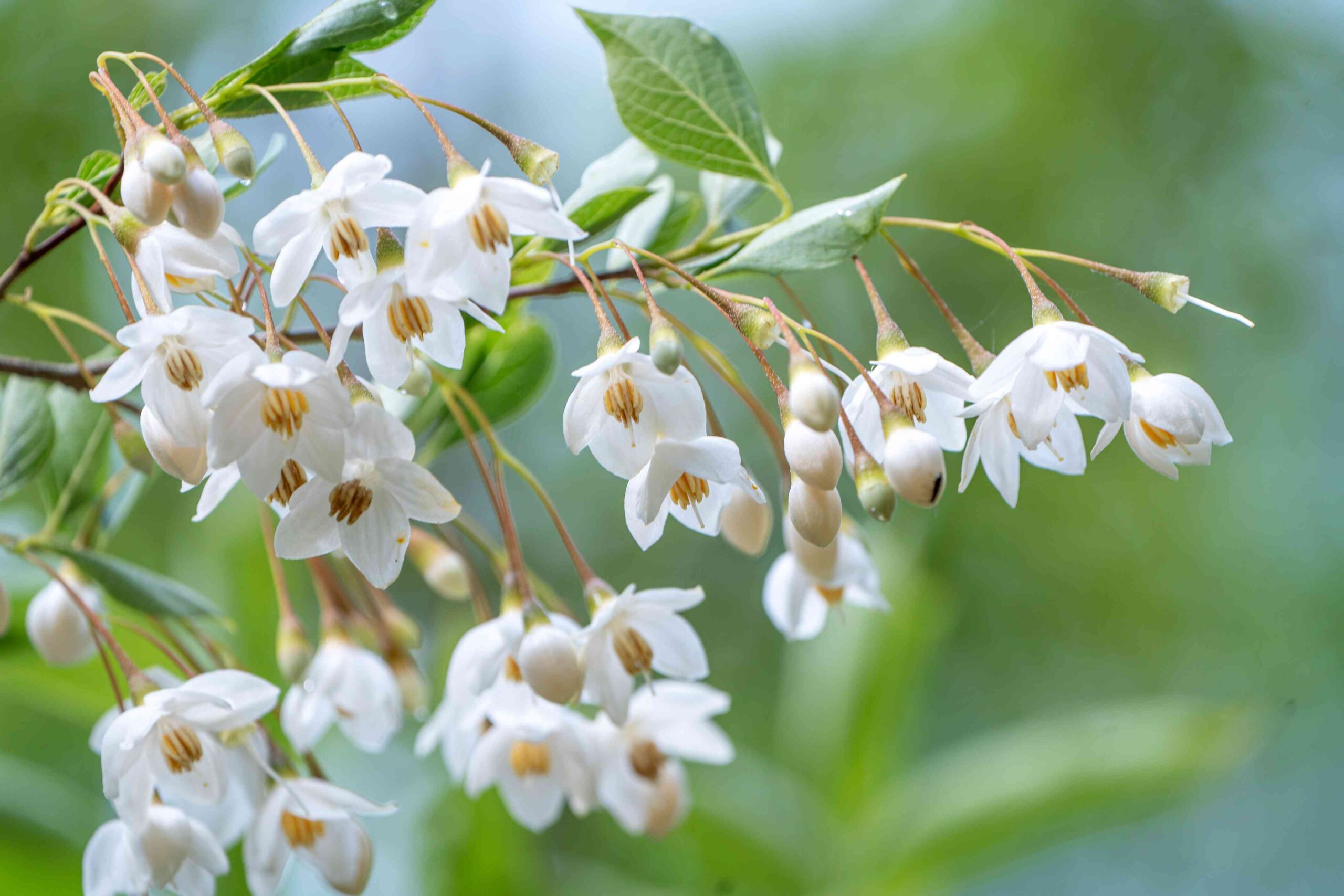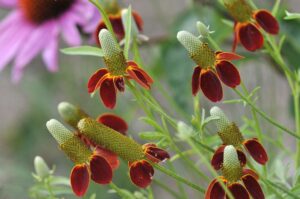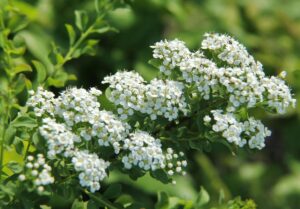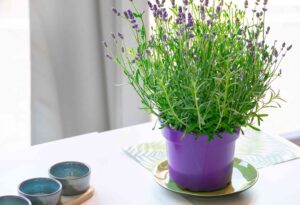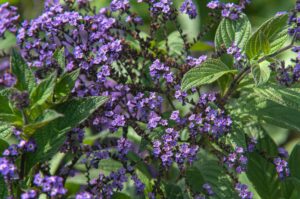How to Grow and Care For Japanese Snowbell
The Japanese Snowbell (Styrax japonicus) is a stunning ornamental tree that brings elegance and beauty to any landscape. With its pendulous white bell-shaped flowers and graceful branching pattern, this small to medium-sized tree makes an exceptional focal point in gardens across the United States. Native to Japan, China, and Korea, the Japanese Snowbell has become increasingly popular among American gardeners who appreciate its remarkable combination of delicate beauty and relative ease of care.
In this comprehensive guide, you’ll learn everything you need to know about selecting, planting, growing, and maintaining these exquisite trees to ensure they thrive in your landscape for years to come.
Understanding Japanese Snowbell Trees
Before diving into cultivation techniques, it’s important to understand what makes these trees so special and sought-after in the US market.
Characteristics and Appeal
Japanese Snowbell trees typically grow to a mature height of 20-30 feet with a similar spread, making them perfect for smaller gardens or as understory trees in larger landscapes. Their most distinctive feature is the profusion of small, bell-shaped white flowers that hang beneath branches in late spring to early summer, filling the air with a subtle, sweet fragrance.
The dark green, oval leaves provide an attractive backdrop for the flowers and turn yellowish in fall, offering some autumn interest. The tree’s naturally horizontal branching pattern creates a distinctive tiered appearance that looks particularly stunning when viewed from below.
According to the United States National Arboretum (part of the USDA Agricultural Research Service), Japanese Snowbell is considered one of the finest small flowering trees for temperate climates. You can find more detailed botanical information about this species on their plant database website.
Popular Varieties for US Gardens
While the species itself is beautiful, several cultivars have been developed that offer unique characteristics:
‘Emerald Pagoda’ – Features larger, more fragrant flowers and glossier leaves ‘Pink Chimes’ – Produces lovely pink blooms instead of the typical white ‘Carillon’ – A weeping form with a cascading habit ‘Fragrant Fountain’ – Another weeping variety with particularly aromatic flowers ‘Evening Light’ – Offers purple-black foliage as a dramatic contrast to the white flowers
Planning for Your Japanese Snowbell
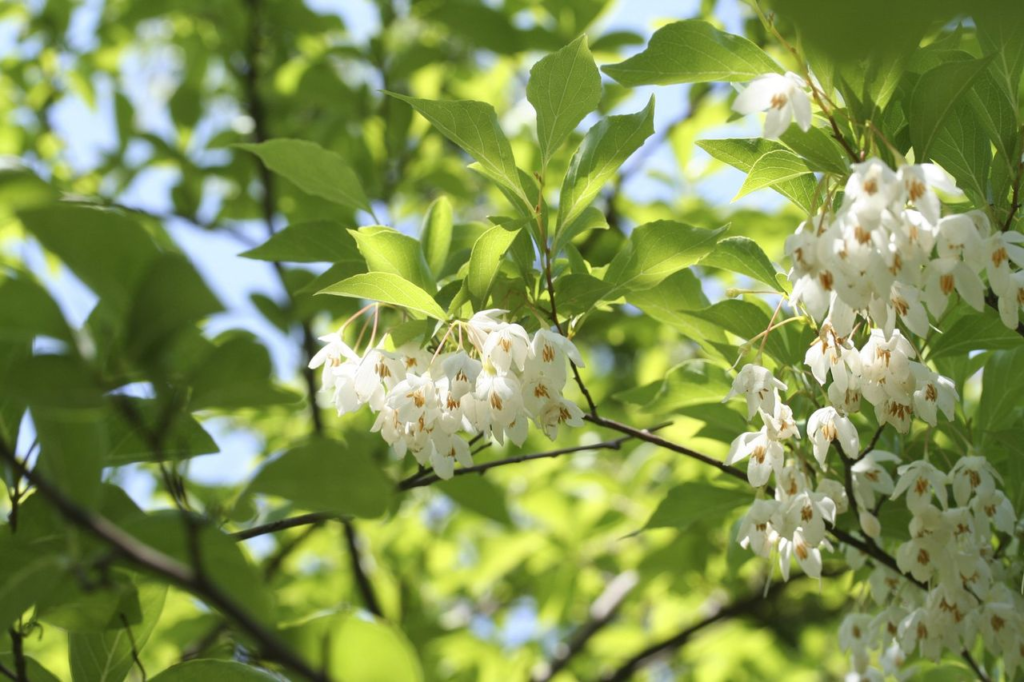
Climate Compatibility
Japanese Snowbell trees thrive in USDA hardiness zones 5-8, making them suitable for much of the continental United States. They perform best in areas with:
- Moderate summer temperatures (they can struggle in extreme heat)
- Protection from harsh winter winds
- Adequate humidity levels
- Distinct seasons with a proper chilling period
The tree is increasingly popular in the Mid-Atlantic, Pacific Northwest, and parts of the Northeast and Midwest where conditions match their preferences.
Site Selection
Choosing the right location is crucial for your Japanese Snowbell’s success:
Light Requirements: Japanese Snowbells prefer partial shade to full sun. In the southern regions of their growing range (zones 7-8), afternoon shade is beneficial to protect them from intense sun. In northern areas (zones 5-6), they can tolerate more direct sunlight.
Soil Needs: These trees perform best in rich, well-drained soil with acidic to neutral pH (5.5-7.0). They won’t tolerate standing water or heavy clay soils that don’t drain properly.
Spatial Considerations: When selecting a planting location, remember that mature specimens can reach 20-30 feet in height and width. Ensure adequate space away from buildings, power lines, and other permanent structures.
For optimal aesthetic display, position your tree where its pendulous flowers can be appreciated from below or where its graceful form can be highlighted against a complementary background.
Planting Your Japanese Snowbell
When to Plant
The ideal times to plant Japanese Snowbell trees are early spring (after the threat of severe frost has passed) or early fall (at least 6 weeks before your first expected frost). These timeframes allow the tree to establish roots before facing the stress of extreme temperatures.
For container-grown specimens:
- Spring planting (March-May depending on your region)
- Fall planting (September-October in most regions)
For balled and burlapped specimens:
- Fall is often preferred as it gives the root system time to establish before summer heat arrives
Planting Process
Follow these steps for successful planting:
- Dig the hole two to three times wider than the root ball but only as deep as the root ball itself. The wider hole encourages outward root growth.
- Examine the root ball before planting. For container-grown trees, gently tease out some of the outer roots to encourage them to grow into the surrounding soil. For balled and burlapped trees, remove any wire baskets and cut away as much burlap as possible after placing the tree in the hole.
- Position the tree so that the top of the root ball is level with or slightly above the surrounding soil. Never plant too deep, as this can lead to trunk rot and poor growth.
- Backfill the hole with the original soil, gently firming it as you go to eliminate air pockets without compacting the soil heavily.
- Create a water basin around the drip line of the newly planted tree by forming a low soil berm.
- Water thoroughly immediately after planting until the soil is evenly moist but not soggy.
- Apply 2-3 inches of mulch in a circle around the tree, keeping it several inches away from the trunk. Mulch helps retain moisture and suppress weeds.
Care and Maintenance
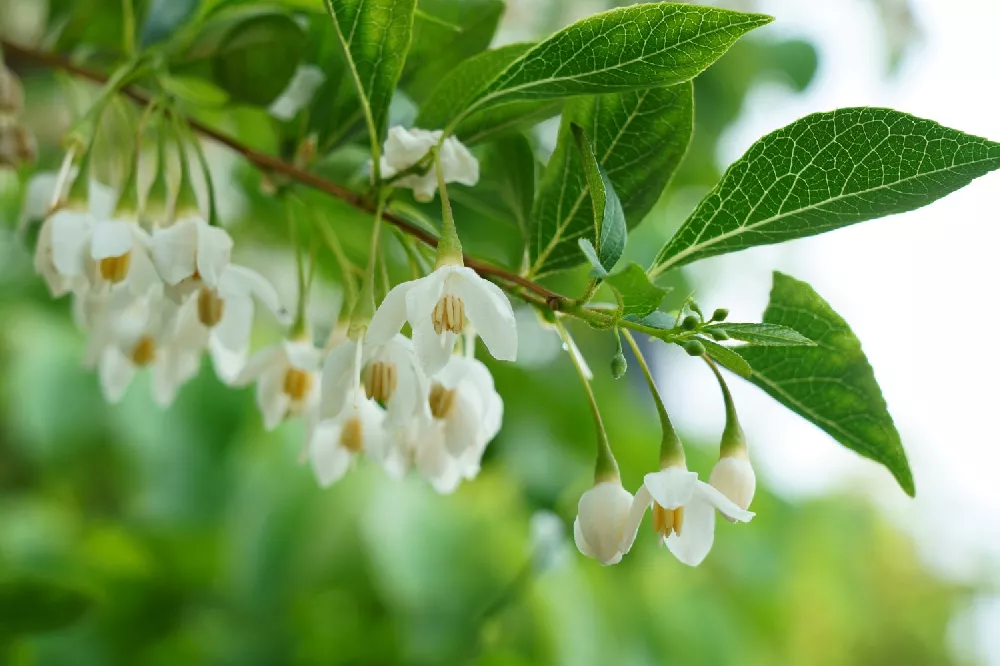
Watering Requirements
Proper watering is essential, especially during the establishment period (first 2-3 years). Use this schedule as a guide:
| Growth Stage | Frequency | Amount | Notes |
|---|---|---|---|
| First month after planting | Every 3-4 days | 5-10 gallons | Check soil moisture regularly |
| First growing season | Weekly | 5-10 gallons | Adjust for rainfall |
| Second year | Every 10-14 days | 10-15 gallons | During dry periods |
| Established trees | As needed | 15-20 gallons | During extended droughts |
Signs of overwatering include yellowing leaves and root rot, while underwatering manifests as wilting, leaf scorch, and premature leaf drop. The best practice is to water deeply but infrequently, allowing the top few inches of soil to dry between waterings.
Fertilization Strategy
Japanese Snowbell trees benefit from modest fertilization:
- Newly planted trees: No fertilizer for the first year as it can damage developing roots.
- Young trees (2-5 years): Apply a balanced, slow-release fertilizer (such as 10-10-10) in early spring as growth begins. Use about 1/2 pound per inch of trunk diameter.
- Mature trees: Fertilize every other year unless growth seems slow or foliage appears pale. In those cases, yearly application is beneficial.
- If your soil pH is above 7.0, periodic applications of soil acidifiers may help maintain the slightly acidic conditions these trees prefer.
Always water thoroughly after fertilizing to help nutrients reach the root zone and prevent fertilizer burn.
Pruning Guidelines
Japanese Snowbell trees naturally develop an attractive form and require minimal pruning. When necessary, follow these guidelines:
- Timing: Prune immediately after flowering ends (typically early to mid-summer). This timing allows flower buds for the following year to develop undisturbed.
- Objectives:
- Remove dead, damaged, or diseased branches
- Eliminate any crossing or rubbing branches
- Thin crowded areas to improve air circulation
- Shape lightly to enhance the natural tiered form
- Technique: Make clean cuts just outside the branch collar (the swollen area where the branch meets the trunk or larger branch). Avoid leaving stubs or cutting too close to the collar.
Heavy pruning is rarely necessary and can disrupt the tree’s natural elegant form. It’s best to select a good planting location initially so major size control isn’t needed later.
Common Problems and Solutions
Pests
Japanese Snowbell trees are relatively pest-resistant, but they may occasionally encounter:
- Aphids: These small insects can cluster on new growth, causing distortion and sticky honeydew deposits. Control with insecticidal soap or a strong spray of water to dislodge them.
- Scale insects: These immobile pests attach to branches and stems, sucking plant juices. Treat with horticultural oil during the dormant season or insecticidal soap during active growth.
- Spider mites: These tiny arachnids can cause stippling on leaves, especially during hot, dry periods. Regular misting and maintaining adequate humidity can help prevent infestations.
For serious infestations, consult your local extension office for environmentally responsible treatment options appropriate for your region.
Diseases
Several diseases can affect Japanese Snowbell trees:
- Leaf spot diseases: Various fungal pathogens can cause spots on foliage. Improve air circulation by thinning branches and avoid overhead watering to reduce humidity around the foliage.
- Root rot: Caused by consistently wet soils, symptoms include wilting despite adequate moisture and darkening at the base of the trunk. Prevention through proper site selection and watering practices is the best approach.
- Powdery mildew: This fungal disease appears as a white powder on leaves, typically in late summer. While rarely fatal, it can be unsightly. Improve air circulation and apply fungicides if necessary.
Regular monitoring allows for early detection and intervention before problems become severe.
Seasonal Care Calendar
Spring (March-May)
- Apply fertilizer to established trees (2+ years old)
- Monitor for aphids on new growth
- Water as needed, especially during dry spells
- Enjoy the beautiful flowering display!
Summer (June-August)
- Prune immediately after flowering finishes
- Monitor water needs during hot periods
- Watch for signs of leaf spot diseases or powdery mildew
- Apply 2-3 inches of fresh mulch if spring application has thinned
Fall (September-November)
- Reduce watering as temperatures cool
- Plant new specimens early in the season
- Enjoy the subtle fall color as leaves turn yellow
- Avoid fertilization late in the season
Winter (December-February)
- Protect young trees from harsh winds with burlap screens if necessary
- Monitor for snow or ice damage and prune affected branches promptly
- Plan for spring planting by selecting varieties and preparing sites
Landscape Uses and Companion Planting
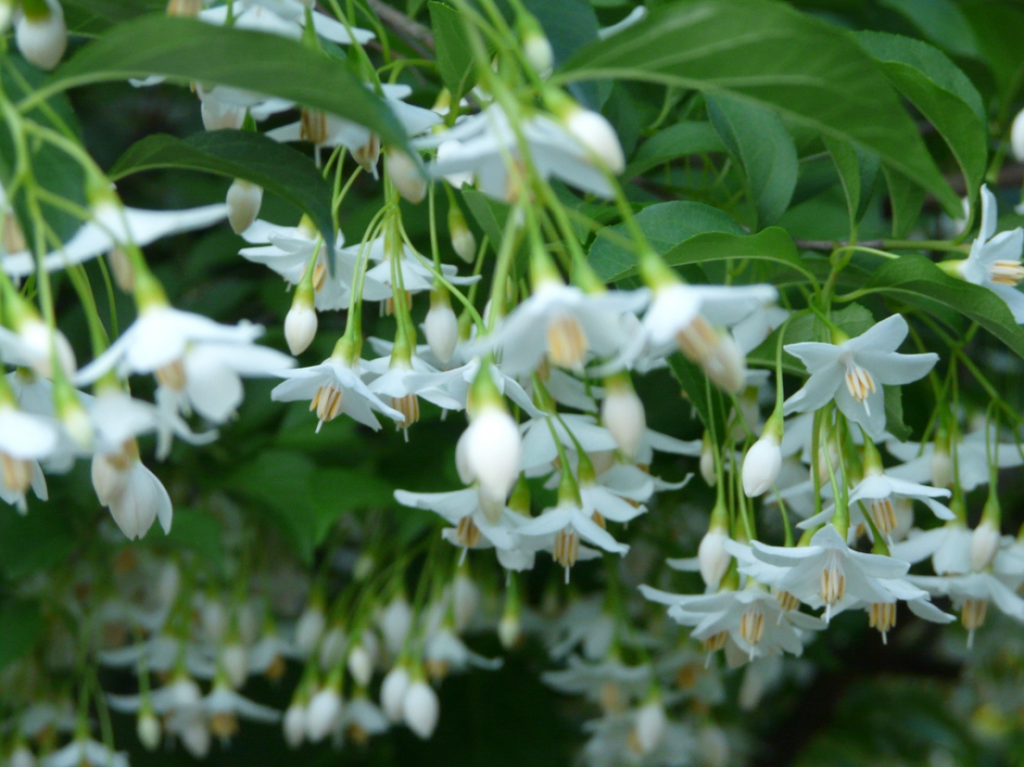
Design Applications
Japanese Snowbell trees excel in various landscape settings:
- Specimen tree: Their elegant form and stunning flowers make them perfect focal points
- Patio or deck tree: Planted near outdoor living spaces where their flowers can be appreciated up close
- Woodland garden: As understory trees in naturalized settings
- Asian-inspired gardens: Complementing Japanese maples, bamboo, and stone elements
- Foundation planting: For smaller varieties, as an architectural element near the home
Companion Plants
These plants pair beautifully with Japanese Snowbell trees:
- Ground covers: Hostas, ferns, and astilbe thrive in the dappled shade beneath
- Shrubs: Azaleas, rhododendrons, and hydrangeas share similar soil and light preferences
- Perennials: Bleeding heart, hellebores, and Japanese forest grass create a cohesive woodland aesthetic
- Bulbs: Spring-flowering bulbs like daffodils and tulips provide interest before the tree blooms
When selecting companions, choose plants with similar cultural requirements to create a harmonious, low-maintenance planting scheme.
Conclusion
The Japanese Snowbell tree offers American gardeners a perfect combination of elegant beauty, manageable size, and relatively straightforward care requirements. By selecting the right site, providing appropriate care, and addressing issues promptly, you can enjoy these magnificent flowering trees for decades.
Whether you’re looking to add a specimen tree to your landscape, create an Asian-inspired garden, or simply bring more spring flowering beauty to your yard, the Japanese Snowbell deserves serious consideration. Its cascades of delicate white bells, graceful form, and adaptability to various garden settings make it one of the finest ornamental trees available to American gardeners today.
With the knowledge gained from this guide, you’re well-equipped to successfully grow and care for these remarkable trees in your own landscape. The minimal maintenance required will be amply rewarded by years of enchanting spring displays and the distinctive presence these trees bring to any setting.
